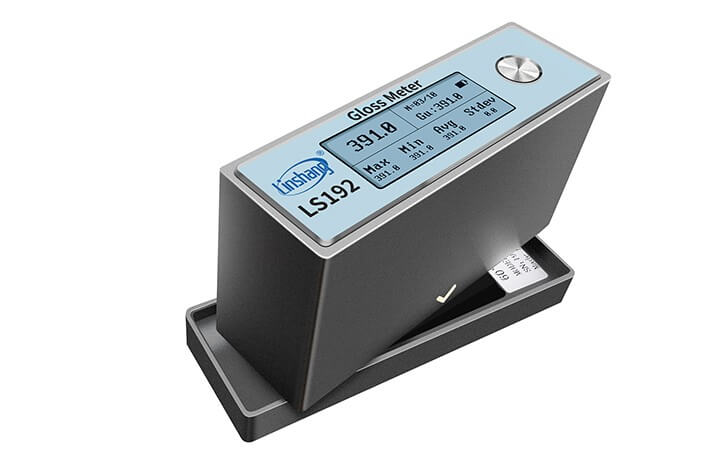Glossiness Measurement Device for Glass
1. What is glass gloss?
Glass is an amorphous inorganic non-metallic material. It is generally made of a variety of inorganic minerals as the main raw materials and a small amount of auxiliary materials. Different glass due to differences in raw materials and craftsmanship, the surface gloss of the glass produced will also be very different.
Glass gloss is a kind of mineral non-metallic gloss. It is characterized by no metallic feel, weak reflection, like the gloss of ordinary glass surface. It is a common kind of mineral luster. About 70% of minerals have glass luster. Almost all of this gloss is non-metallic minerals, such as crystal, fluorite, calcite, etc.
2. How to detect glass gloss?
The measurement of glass gloss can use professional glass gloss tester. It mainly depends on the angle of illumination and observation of the light source. The gloss measurement angles have 20 °, 45 °, 60 ° or 85 °. Different industries often use gloss testers that measure at different angles.
Glass gloss is usually tested by a 60 ° angle gloss tester. Low gloss products are mainly used for educational interactive whiteboards. High gloss products are mainly used for high-end products such as automotive glass. In the glass production process, the higher the degree of closure, the higher the production cost, the more obvious the thinning of glass.
Short press the power button to turn on the gloss tester.
Place the gloss tester on the tested glass surface
The gloss value of the glass will be displayed on the interface immediately
Press the power button for each measurement if you want to restore the data
3. Glass gloss tester
The glass gloss tester is composed of light source, lens, receiver, data processing part and LCD. Use the principle of light reflection to test the material, that is, irradiate the sample under the specified incident angle and the specified beam condition to obtain the beam in the direction of the reflection angle. Digitize the intensity of the reflected beam and calculate the gloss of the material using the formula of gloss. We can detect the specific gloss value of the glass surface by using the Linshang gloss tester. The range of the LS191 gloss tester is from 0-200GU, while the range of LS192 is from 0-1000GU. For customers, the only difference between the two instruments is the measurement range.

Therefore, when selecting the instrument, users only need to determine whether the gloss of the measured object is within the range of the instrument. In general, low-gloss materials such as frosted glass, paper, leather, plastic, furniture, etc. can be measured using LS191 gloss meter with small measurement range. While for the gloss measurement of high-gloss materials such as metal, mirror material, polished marble, we can use LS192 large range gloss tester.
Of course, if you are not sure about the gloss of your sample, you can also send the sample directly to our company and we can measure the gloss for you.